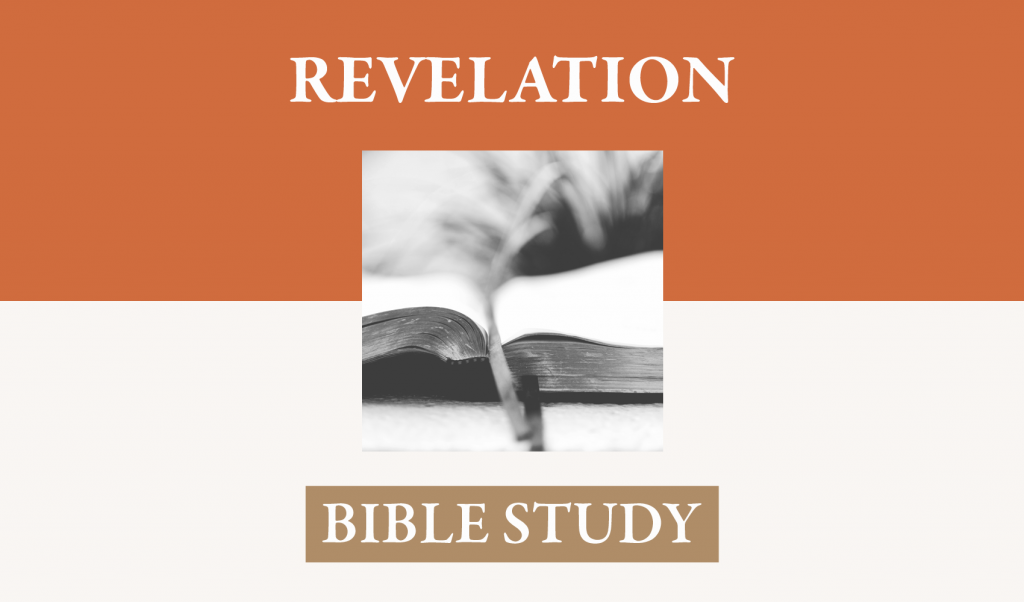One of the consistent themes of Scripture is that Jesus Christ came into the world to save sinners (1 Timothy 1:15). The sinners he came to save were those that God the Father had given him (John 6:37; 10:11, 27-30; 17:2, 6, 20-21). Combined throughout the ages they constitute the Church against which the gates of hell shall not prevail (Matthew 16:15- 16), the Church for whom Christ shed his blood (Ephesians 5:25), the church for whom he rose and reigns (Ephesians 1:20-23), the assembly that will be gathered as the redeemed ones of the covenant (Hebrews 12:23, 24). As Christ accomplished his covenantal work through trial, rejection, and death at the hands of a fallen world system that hates the knowledge of God, even so the Church will be protected and nourished through trial, rejection, and death. Note the striking parallelism of 12:11 –“And they have conquered him by the blood of the Lamb, and by the word of their testimony, for they loved not their lives even unto death. Therefore rejoice O heavens, and you who dwell in them!”
I. Chapter 10 – In the middle of the second woe, Chapter 10 begins an interlude in which the reader is given assurance of the trustworthiness of the prophecy. The angel that appeared to John symbolized the presence of God in the cloud and the pillar of fire, the covenant of God in the rainbow, and the glory of God in the shining face, even as the face of Moses shone. This angel, given great power [one foot on land and one on sea] and great perception of the glory of heaven [the seven thunders that John was not allowed to record (cf. 2 Corinthians 12:1-5)] swore that with the sounding of the seventh trumpet, the mystery of God would be fulfilled, even as foretold by the prophets. He clearly refers to the incarnation and the completion of Christ’s work as narrated in chapter 12. John himself stands in the line of these true prophets as indicated by his eating the scroll after the manner of Ezekiel in Ezekiel 3:1-15 and the assurance that he “must again prophesy.”
II. Chapter 11 – Whereas the first part of the second woe showed the anger of God toward the nations, this part of it shows his wrath toward unbelieving
The measuring of the
The sack of
The stream of prophets given to Israel are symbolized by the two olive trees, symbolizing anointing, and the two lampstands, which symbolize God’s knowledge of all that is happening in the earth. This points to the prophecies of Isaiah, Jeremiah, and Ezekiel, as well as others, whose words were rejected by the leadership in
Their days of prophecy lasted for 1260 days, the same number of days that the “woman” of chapter 12 is nourished. Together these days equal seven years. Seven years means the perfection of time for God to accomplish all the provision of the eternal covenant, the scroll in the right hand of him who sat on the throne. The prophets did their labors until the “fullness of time had come” when God “sent forth his Son,” For the rest of the time, another 1260 days, the church is protected, nourished and readied for the culmination of all things in the glorious appearing of “our great God and Savior Jesus Christ” (Titus 2:13).
Though rejected by
As fulfillments of the “two olive trees” (Revelation 11:4 and Zechariah 4:12-14 and 6:11-14), the prophecies are christocentric in pointing to his fusion of the anointed offices of priest and king in one person.
The second woe points, therefore, to the judgment of God resting on the nations through plague of Satanic instigation on the one hand and war unleashed by the angels of God on the other; it includes a comprehensive view of the rebellion of people that had been blessed with a continuous stream of revelation that they rejected in an ultimate sense when they killed the Messiah himself (8).
The third woe, beginning in 11:15, consists of the victory of the God of heaven against whom such rebellion has been unendingly promulgated by Jew and Gentile alike. As the heavenly hosts become aware of the action about to be taken in the sending of the Son of God, the victory of the Christ is proclaimed as a forgone conclusion, “The kingdom of this world has become the kingdom of our Lord and of his Christ, and he shall reign forever and ever” (11:15). The loud voices in heaven celebrate divine justice (“your wrath came”), mercy (“rewarding your servants”), and sovereignty (“You have taken your great power and begun to reign”).
Verse 19 has an impressive display of the realities that control all the events that lead to this glorious chorus of worship. John sees the vision of the ark of the covenant—that is, the premundane determination of God to display the wisdom of redemptive love—and the reminder of the inflexibility of divine law and justice in the Sinaitic manifestations. These occur in 4:5, 8:5, 11:19, and 16:18 as signs of the ever-present, immutable, and controlling nature of the revelation of divine law in Exodus 19:8.
III. Chapter 12 – Following upon the vision of the ark of the covenant, we see that God has decreed to give to his Son a people for whom he is to give his life by the shedding of his blood in sacrifice. Because of the eternal covenant, the Son comes as the Christ, Jesus of Nazareth, born out of the necessities of delivering his church from the threat and pains of death that hung over the heads of each of its members.
A. The woman is gloriously attired, having all of nature in subservience to her beauty (Psalm 8:3-6; Hebrews 2:9-15) with the promises given to Israel of the eternity of the Davidic reign giving her rule (“crown of twelve stars;” see Luke 1:32).
B. Her pregnancy, therefore, is not a figure of Mary, but a picture of the fact that the church’s existence in the eternal purpose of God makes necessary the coming of the Messiah. As Christ by his death secures for himself and gives rise to the church, even so, the existence of the church in the decree and promises of God gives rise to the Christ. Even as Mary said after becoming pregnant by the Holy Spirit, “He has helped his servant Israel, in remembrance of his mercy, as he spoke to our fathers, to Abraham and to his offspring forever” (Luke 1:54f).
C. Verses 3 and 4 give another picture of the fall of Satan from Heaven (cf. 9:1).
1. His determination from the time that envy and jealousy entered his mind while still in heaven, was to put to naught the decree of God that less glorious creatures than himself should be raised above him in status and in access to the divine manifestation of love.
2. Satan and his horde relished the apparently helpless estate of the Christ child and sought throughout the time of the incarnation to destroy him or make him useless for the purpose of redemption.
3. Another picture of this cosmic event is described in verses 7-9. Michael cast him out of heaven along with his angels. Michael appeared in Daniel as “one of the chief princes;” more than that he is ”Daniel’s (“your”) prince, that is, the only prince who contends against the prince of
4. When Satan heard God’s pronouncement against him that the seed of the woman would crush his head (Genesis 3:15) he could not help but recognize in this a familiar theme. Verses 7-9 conflate the initial casting out of heaven and the final triumph of the Christ over Satan.
D. Verse 5 – In quick summary fashion John points to the complete victory of the male child (“one who is to rule all nations with a rod of iron” see also 19:15) which is consequent to his being “caught up to God and to his throne.”
1. The child accomplished all that he needed in his call to redeem his people and take away from Satan any leverage against them due to their sinfulness and the verdict of death that justice itself would hold over their heads in their consciences. (Hebrews 2:14, 15; 9:14; 10:22)
2. Satan now had lost all possibility of foiling the redemptive purpose of God to be accomplished through the incarnation, life, death, burial, resurrection, and ascension of Christ. He must turn his attention to the woman and the “rest of her offspring” (17).
E. In verse 6 John summarized the plight of the church.
1. She fled into the wilderness. Even as Christ began his ministry by being led to the wilderness to be tempted of Satan, and the children of
2. Note that this wilderness has a “place prepared by God” for her. Christians must see the wilderness as a place of protection, though rugged and challenging, where they will not be overwhelmed by the cocky self-confidence of this world in its pursuit of riches, wealth, honor, prestige, and pleasure as all that constitutes life. We shall see, as the remainder of the Revelation unfolds, the radical ambivalence of the world system that oscillates between the wild affirmation of the system for the pleasure it gives and the hatred and jealousy that dominate its relationships that always bring about destruction (chapters 17, 18). This system hates holiness, hates God, hates the redeemed of God, and at last hates itself.
3. She is to be nourished for 1260 days. We learn in 11:3 that the days of prophecy were 1260 days. This same amount of time is variously referred to as forty-two months (11:2), “a time, times, and half a time” (14). In the same way that the prophets completed their part in God’s unfolding of his covenantal design of creation, so the church will be on the earth and be protected through the various vicissitudes of its pilgrimage in this hostile environment. This age is not a friend to grace, but grace will overcome it and will indeed lead us home.
Verse 13 – Now that Satan has been cast out of heaven and can do no more spoiling there, and that Christ in his earthly sojourn has not succumbed to his wily and murderous hatred but rather has secured his final retribution in an eternal inferno, he turns his attention to the ones for whom Christ died.
Verses 14-16,- The church, however, those that are truly born again according to God’s eternal design, though the objects of Satan’s hatred and often the victims of his murderous and oppressive claims to power (13:5-8), will be protected and are provided with all that they need to persevere in their love of and testimony to the truth.
Verse 17 -We must remember that all the persons and systems through whom the Dragon (12:3) duplicates his opposition to God’s holy purpose (13:2-4) are no more than men (13:18.)
Chapter 14 – God’s elect stand secure, purified in the redemptive purpose of God through the work of Christ while the world faces the certainty of the fullness of divine wrath because of its rebellion as well as its rejection of gospel proclamation.
Chapters 15-20 – Though the world appears powerful and self-satisfied, it is filled with disgust, hatred, spiteful unholiness, and an internal corruption that will make it fall of the gravity of its own unrighteousness. God’s wrath will consume it while the saints of God, though hated by the world, are loved by God and will be protected by him for the enjoyment of the pure and unending pleasures of eternity constituted by the love of the trinity.
With the certainty of immutable righteousness and justice (15), God will manifest his holy wrath even as he has done through the ages periodically and in part with the result that those punished manifest even more hardness and hatred (16).
Chapter 17 – The world system whose energy is driven by rampant sexual perversity (as manifest at that time in the tyranny of
Chapter 18 – The great world cities that have created a system of trade and commerce [“and all nations were deceived by your sorcery” 18:23] designed to satisfy every desire of man in absence of the worship of God, proves to be short-sighted, self-destructive, and, not only tragically disappointed, but infinitely susceptible to the coming wrath of the Lamb.
Chapters 19, 20 – The saints of God are taken as the bride of Christ by him at his coming and they will execute their authority to judge and to reign (20:4) with him. Christ will defeat and reign over his enemies on the earth, the scene of the rebellion, the place of their killing and persecution of the bride, the creation that they have commandeered for their own pleasure with no regard to its witness to the glory of God. At the end of this period of perfectly just and thorough judgment (given as the time of a thousand years to emphasize that the appropriate time will be taken to show the absolute perspicuity of God’s knowledge of all things and the exact justice of his rule), the nations again will demonstrate that apart from the operation of sovereign and effectual grace they will not be governed by the Lord. Their rebellion will result in immediate defeat and the final judgment occurs where all the unbelieving and disobedient will be consigned to their just judgment, the lake of fire. Grace reigns supreme according to the eternal covenant of grace for “ if anyone’s name was not found written in the book of life, he was thrown into the lake of fire.”






















